Asenath Hatch Nicholson
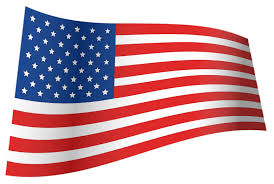
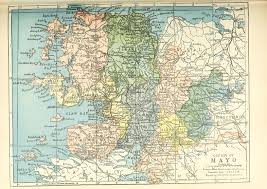
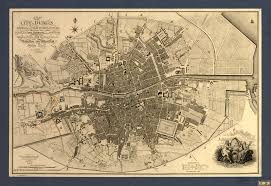
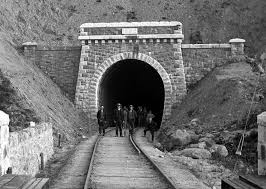
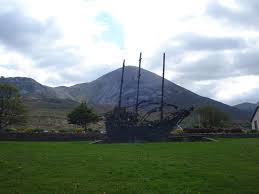

Philanthropist / Author
This amazing Quaker from New York saved many lives in Ireland during her time as she came to ‘personally investigate the condition of the Irish poor.’ Her sketches and snapshots, vividly recaptured individuals also many events during one of the most horrific periods of Irish history. [i]
Asenath Hatch was born at Chelsea, Vermont on 24th February 1792. Her Hatch family belonged to the Protestant Congregational Church. Her independent spirit was discovered: then encouraged as aged sixteen years she began her teaching career. During 1829 she married Norman Nicholson; a widower with three children. She moved to New York: they were both interested in the vegetarian & coffee-free diets of Rev. Sylvester Graham with the result that they opened a boarding-house thus offered vegetarian diets to their guests. [iii]
She had an evangelical belief in the social reform of all classes of persons. She was a committed abolitionist, a temperance crusader also a social reformer with a caring disposition. Her personal mission was to promote the bible along with providing food. She spent almost four years & four months in Ireland as she travelled throughout the Country in her polka coat with velvet bonnet also a very large muff walking or travelling in Bianconi coaches. [ii]
Church
Her independent spirit was discovered: then encouraged as aged sixteen years she began her teaching career. During 1829 she married Norman Nicholson; a widower with three children. She moved to New York: they were both interested in the vegetarian & coffee-free diets of Rev. Sylvester Graham with the result that they opened a boarding-house thus offered vegetarian diets to their guests. [iii]
Travels Overseas
She travelled to both Scotland and Ireland to distribute bibles among the people. While in Ireland Asenath Nicholson allowed herself twenty-three pence a day for food: a diet of bread, cocoa also she reduced her stipend to sixteen pence (no cocoa) when her resources dwindled. From July 1844 to August 1845 she walked through Ireland visiting every county but Cavan. [iv]
Appeals
As soon as Asenath Nicholson arrived in Dublin on 7th December 1846, Nicholson wrote to the readers of Horace Greeley’s New York Tribune also Joshua Leavitt’s abolitionist emancipator describing conditions in the city, she asked for assistance for the Irish poor. She did not have the means to finance her relief efforts, yet she despaired that she was brought to witness a famine without the means to relieve the hungry. A letter duly arrived from Greeley with money from his tribune readers which she regarded not only as the answer to her prayers but a sign of divine intervention. Other friends sent food, money also clothes to distribute or to send to trusted friends to administer. During July 1847 New Yorkers sent Asenath Nicholson five barrels of Indian corn aboard the United States frigate Macedonia. She described herself walking through Dublin each morning as she distributed slices of bread from a large basket. She opened her own soup kitchen in the Liberties, an area she had selected for its extreme poverty. [v]
Lazy People?
She had heard that the Irish poor were lazy; however, based on her experience when she visited the Irish in their cabins, she concluded that they were not lazy; they just lacked work. Whenever Asenath Nicholson saw the poor employed, she made a note of it. The sight of a woman with her daughters as they carded & knitted produced this comment: ‘This was an unusual sight for seldom had I seen, in Ireland, a whole family employed among the peasantry. Ages of poverty have taken everything out of their hands but preparing and eating the potato and then sit listlessly on a stool, lie in their straw or saunter upon the street because no one hires them.’ [vi]
Humanitarian Works
When the blight came a second year Asenath Nicholson returned in the winter of 1846 to do what she could to help (that time without the bibles) She spent much of that time in the famine-stricken west. Nicholson’s food kitchen was operated on a triage system. She decided that ten pounds divided among one hundred people helped no one: so she committed herself to several group of families for whom she cooked Indian meal daily. Asenath Nicholson stayed in Dublin until July 1847 when she left for Belfast. When the Temporary Relief Act (the ‘Soup Kitchen’ Act) had become effective: she left Dublin & travelled to the west of Ireland. During July 1847 she visited Donegal, from there on to Newport, Co. Mayo. She had visited Newport earlier; when she stayed with her friend, the postmistress Mrs. Margaret Arthur. There she found ‘misery without mask.’ She discovered further misery when she went west from Belmullet to spend the winter of 1847 / 1848 in the Erris peninsula. She quickly set to work as she visited the poor or encouraged relief workers. [vii]
Praise or Distain
Over & over again Asenath Nicholson contrasted the lack of charity among relief officials with the compassion of volunteers. She challenged the government on two counts: their stewardship of relief resources and their attitude toward the poor for whom they were responsible. She made a distinction between the paid relief officers, whom she characterized as bureaucratic, hierarchical, self-serving, also with the volunteer relief workers (Quakers, coast guardsmen also their families & local clergy) who were compassionate, egalitarian & selfless. She raged that grain was diverted from food to alcohol. She charged that grain used for distilling could have fed the Irish poor. She was quick to praise resident landlords who provided employment for their tenants or derided those who abandoned the people as she saw it. She recorded the names of Rev. Patrick Pounden rector of Westport & his wife also Rev. Francis Kinkaid, the Church of Ireland curate of Ballina for their selfless acts to the poor. Nicholson continued to appeal for help through letters: on 31st October 1847 Asenath Nicholson wrote to her friend the English Quaker philanthropist William Bennett who had visited the west of Ireland early in 1847: ‘You, sir, who know Erris, tell, if you can, how the landlord can support the poor by taxation, to give them food, when the few resident landlords are nothing and worse than nothing, for they are paupers in the full sense of the word.’ She went on to ask Bennett to use his own resources or his influence to support a local employment scheme. ‘I must and will plead, though I plead in vain, that something may be done to give them work. I have just received a letter from the curate of Bingham’s Town saying that he could set all his poor parish, both the women and children, to work, and find a market for their knitting and cloth, if he could command a few pounds to purchase the materials.’ [viii]
Later Years
In the fall of 1848, when she thought the Great Irish Famine was over Asenath Nicholson left Dublin for London. The ‘lone Quaker’ who saw her to her boat was probably her friend the abolitionist Quaker printer Richard Davis Webb. She later joined the cause of world peace when she went with delegations to Paris & Frankfurt. She returned to New York where she lived quietly. Asenath Nicholson was in declining health for some time.
Demise
Asenath Hatch Nicholson’s demise occurred of typhoid fever in Jersey City on 15th May 1855. [ix]
Publications
Ireland’s Welcome to the Stranger; Or an Excursion through Ireland in 1844 & 1845 for the Purpose of Personally Investigating the Condition of the Poor 1847 (Baker & Scribner, New York / 1847 Charles Gilpin London), Annals of the Famine in Ireland in 1847, 48, 49’ 1851 (New York), Treatise on Vegetable Diet, with practical results: or, a leaf from Nature’s own book, illustrated by facts and experiments of many years practice 1850 (Glasgow), Lights and Shades in Ireland (Charles Gilpin London) in three parts: P1, Early History P2, Saints, kings and poets of the early ages. P3, The Famine of 1847,48, 49, Query, also Home Rule. The Substance of a Speech in part delivered, in part intended to be delivered […] at a public meeting in the Town Hall, Leamington’ on Saturday, April 17th, 1886 Birmingham Cornish [x]
Quotations
Asenath Nicholson’s quotes portray her concern: ‘Reader, ponder this well. Enough grain, converted into a poison for body and soul as would have fed all that starving multitude.’
‘Should I sleep the sleep of death, with my head pillowed against this wall, no matter. Let the passerby inscribe my epitaph upon this stone, fanatic what then? It shall only be a memento that one in a foreign land lived and pitied Ireland and did what she could to seek out its condition.’
During her later years she recalled her experiences in New York also Vermont: ‘It was in the garrets and cellars of New York that I first became acquainted with the Irish peasantry, and it was there I saw that they were a suffering people.’ [xi]
Further Information
Asenath Nicholson’s book may be viewed online at this link: [xii] https://archive.org/details/irelandswelcomet00nich
She is referenced on both these sites: [xiii] https://epdf.tips/the-great-irish-famine-impact-ideology-and-rebellion-british-history-i..
[xiv] https://epdf.tips/…/irelands-great-hunger-volume-2-relief-representation-and-remembran..
Asenath Nicholson’s Ireland’s Welcome to the Stranger was translated into a play by Rua Breachtnach as Welcome to the Stranger for the Skibbereen 2018 Arts Festival. [xv]
Christine Kineely discusses at this link: Maureen O ‘Rourke Murphy’s 2015 Aseneth Nicholson & the Great Irish Famine (Syracuse University Press) [xvi]
McDonald Theresa’s 1997 (new ed. 2006, edited by Jim Higgins) Achill Island Archaeology-History-Folklore referenced Asenath Nicholson, (Turner Print Group Longford) (NBC)
Annals of the Famine incorporated in Lights and Shades of Ireland 1850 features a portrait by Anna Maria Howitt of Asenath Nicholson. [xvii]
Áine Ryan in her column Extraordinary Mayo People You May Not Have Heard Of in The Mayo News 16th June 2020 on pages 24 / 25 covers Asenath Nicholson’s life as an evangelist, activist & compassionate stranger. She includes a review of the book Compassionate Stranger the only biography of Nicholson by Professor Emerita Maureen O ‘Rourke Murphy who also edited the journals of her Irish experiences within Annals of the Famine & Ireland’s Welcome to the Stranger.
Fr. Kevin Hegarty penned an article re Asenath Nicholson’s life that included an image by Anna Maria Howitt in his Second Reading column in The Mayo News 1st March 2022 on page 27.
Maureen Murphy @IrishCentral 10th Mar 2017 drmaureenmurphyirishstudies.com/books-publications/
Footnotes
[i] https://www.irishcentral.com › Roots
[ii] www.ricorso.net/rx/az-data/authors/n/Nicholson_A/life.ht
[iii] https://www.irishcentral.com › Roots
[iv] Ibid.
[v] Ibid.
[vi] Ibid.
[vii] Ibid.
[viii] Ibid.
[ix] Ibid.
[x] www.ricorso.net/rx/az-data/authors/n/Nicholson_A/life.ht
[xi] https://www.irishcentral.com › Roots
[xii] https://archive.org/details/irelandswelcomet00nich
[xiii] https://epdf.tips/the-great-irish-famine-impact-ideology-and-rebellion-british-history-i..
[xiv] https://epdf.tips/…/irelands-great-hunger-volume-2-relief-representation-and-remembran..
[xv] https://roaringwaterjournal.com/…/welcome-to-the-stranger-asenath-nicholson-in-west…
[xvi] https://www.irishtimes.com/…/review-compassionate-stranger-asenath-nicholson-and-t…
[xvii] www.ricorso.net/rx/az-data/authors/n/Nicholson_A/life.ht







Comments about this page
Hello..
Please could you advise on any proposed possible endeavours to honour this wonderful woman by way of a formal statue here in Ireland.
I would be most interested in joining any group or Committee to achieve those ends.
Thank You,
Paul Mc Ardle…Louth.
Add a comment about this page